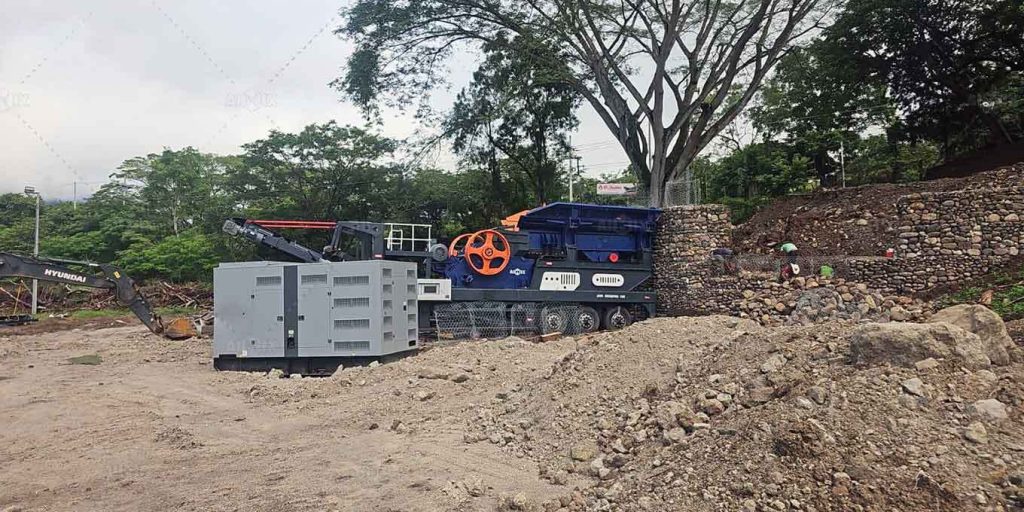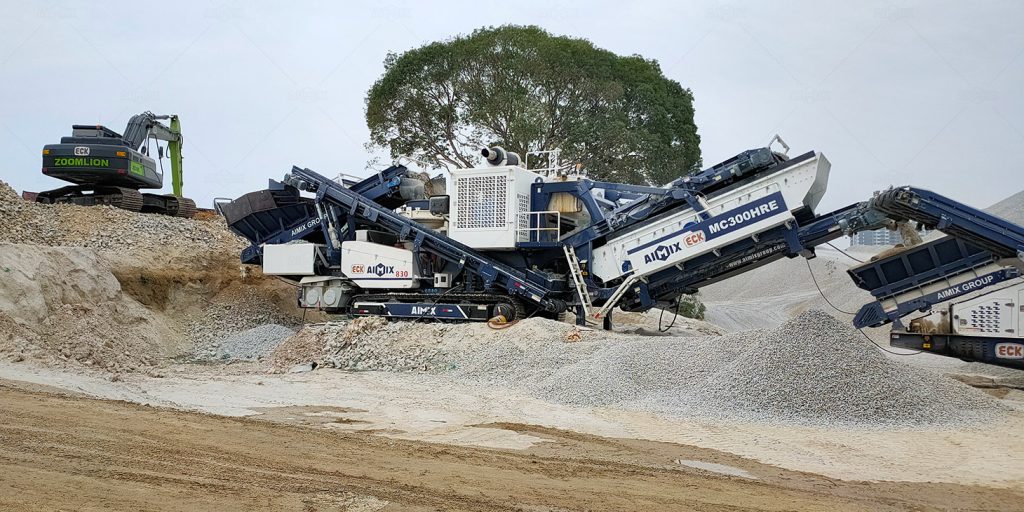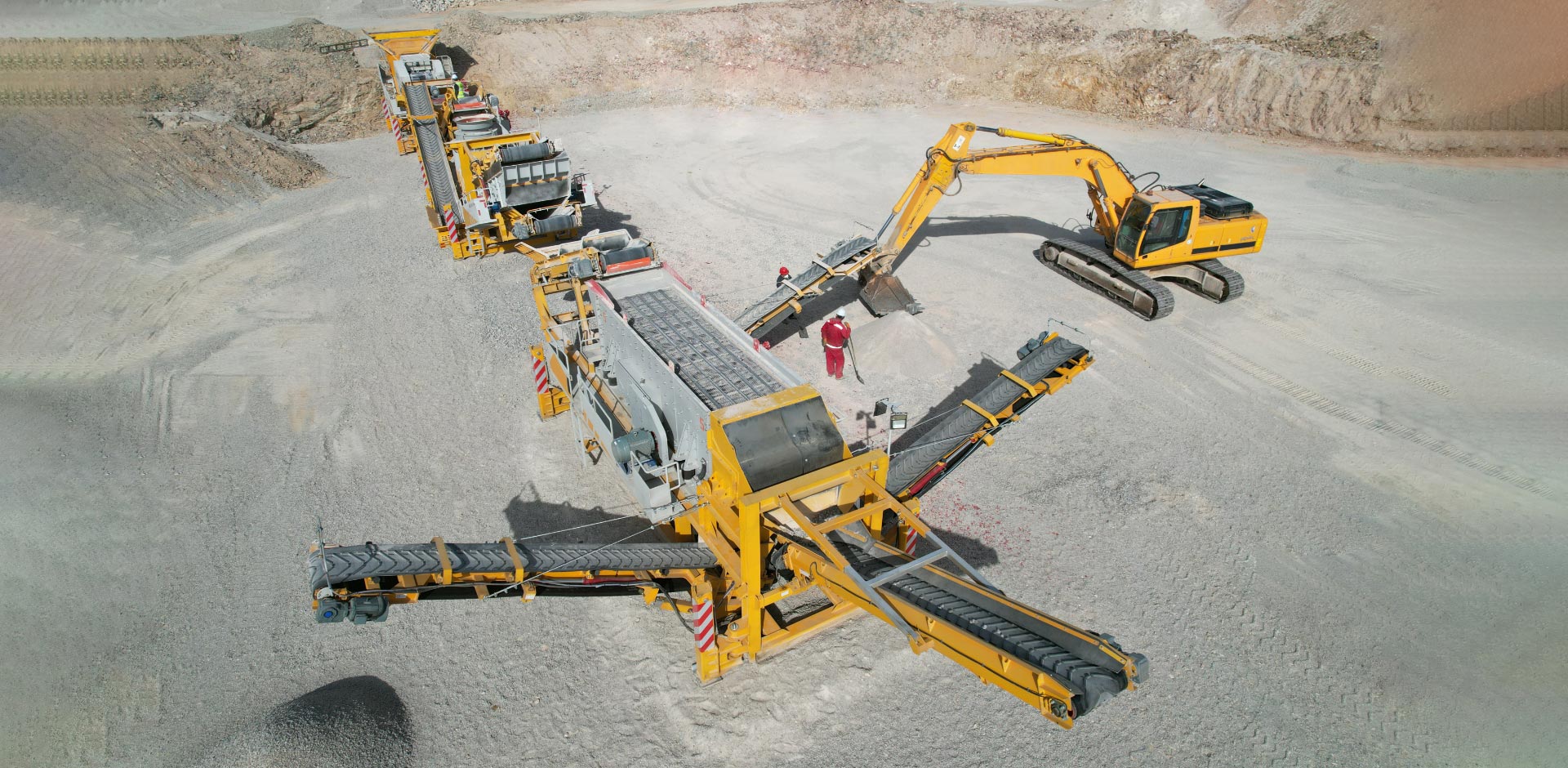Granite, an igneous rock renowned for its compressive strength and abrasiveness, presents a formidable challenge in aggregate production. Its processing cannot be efficiently accomplished by a single machine without significant compromise to either productivity, product quality, or operational cost. The prevailing methodology for tackling this material involves a two-stage crushing circuit, most effectively executed by a mobile jaw crusher working in concert with a mobile cone crusher. This configuration is not a mere sequential arrangement of equipment but a deeply integrated system where each machine performs a specific, non-overlapping function. The synergy between them transforms raw, blasted granite into precisely graded, high-value aggregate products, optimizing the entire production line’s output and economic viability. Understanding this interplay is critical for any operation seeking to maximize yield and minimize wear in hard rock applications.

The Primary Reduction: The Jaw Crusher’s Formidable Role
The mobile jaw crusher serves as the workhorse of the primary crushing stage, tasked with the initial fragmentation of the massive granite feed. Its design is one of brute force and simplicity, engineered to accept large, irregular slabs of rock directly from the quarry face.
Robust Mechanics and the Crushing Chamber
The machine’s operation centers on a fixed jaw and a reciprocating moving jaw, creating a V-shaped cavity. As the moving jaw compresses the granite against the stationary one, it induces tremendous pressure, effectively breaking the rock along its natural fissures. This process, known as compressive crushing, is ideally suited for the high-strength properties of granite. The aggressive nip angle of the jaw chamber is critical here, ensuring a firm grip on the material and preventing slippage, which would lead to inefficiency and accelerated wear on the jaw plates. The output from this stage, known as crusher run or minus-200mm material, is a mixture of coarse, fractured stone that is now manageable for the subsequent processing stage.
Mobility as a Strategic Advantage
The mobility of the jaw crusher machine cannot be overstated. Being track-mounted allows it to be positioned directly at the blast pile, drastically reducing the need for primary feeding equipment like large wheel loaders and the associated cycle times and fuel consumption. This proximity to the raw material source establishes an efficient and compact initial workflow, setting the stage for the entire operation’s logistical efficiency.

The Secondary Refinement: The Cone Crusher’s Precision
If the jaw crusher is the sledgehammer, the cone crusher is the scalpel. The material discharged from the jaw crusher is too coarse for most construction applications and requires further reduction and shaping. This is the exclusive domain of the cone crusher.
The Principle of Interparticle Comminution
A cone crusher operates on a fundamentally different principle. A gyrating mantle spins within a concave bowl liner, continuously changing the gap between them. Unlike the jaw’s single-compression event, the mobile cone crusher utilizes a combination of impact, attrition, and compression in a multi-cycle process. The key mechanism is interparticle comminution, where the rock particles themselves crush each other as they are compressed between the mantle and concave. This method is exceptionally effective at producing a well-graded, cubical product, which is highly prized for its structural integrity in concrete and asphalt mixes. It is far superior at shaping aggregate than a jaw crusher could ever be.
Product Shaping and Gradation Control
The cone crusher offers precise control over the final product’s size and shape. By adjusting the crusher’s closed-side setting (CSS), operators can dial in specific gradations to meet project specifications. Modern hydroset systems allow for these adjustments to be made in minutes, even under load, providing remarkable operational flexibility. For granite, which can be prone to creating flaky particles, the rock-on-rock crushing action in the cone crusher’s chamber is instrumental in breaking these elongated pieces, resulting in a more cubical and mechanically sound end product.
The Synergistic Circuit: Achieving Operational Optimization
The true power of this duo is realized when they are configured into a closed-circuit operation, creating a feedback loop that maximizes efficiency and product quality.
Closed-Circuit Configuration and Scalping
In a typical setup, the jaw crusher feeds directly into a mobile cone crusher. The discharge from the cone crusher is then sent to a mobile screening unit. Here, the material is sorted. Oversized particles are not waste; they are recirculated back to the granite crusher machine for further reduction. This closed-circuit system ensures that no energy is wasted on already correctly sized material and that the final product is consistently on-spec. A critical, often overlooked, component is the use of a scalping screen between the jaw and the cone. This screen removes fine material from the jaw crusher’s output before it enters the cone, preventing the chamber from being packed with fines and allowing it to operate at peak efficiency on the coarse rock that it is designed to crush.
Economic and Logistical Cohesion
The synergy extends beyond mere mechanics into project economics. A well-balanced jaw-and-cone circuit ensures that neither machine is a bottleneck. The jaw crusher’s output is perfectly tailored to the cone crusher’s capacity, creating a harmonious and continuous flow of material. This balance minimizes idle time and maximizes tons-per-hour production. Furthermore, the mobility of both units means the entire crushing circuit can advance with the quarry face or be relocated between project sites with relative ease. This logistical cohesion transforms two powerful individual machines into a single, formidable, and highly profitable production system specifically engineered to conquer the challenges of granite.
